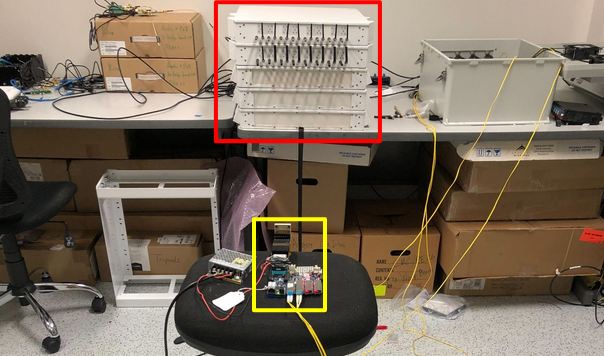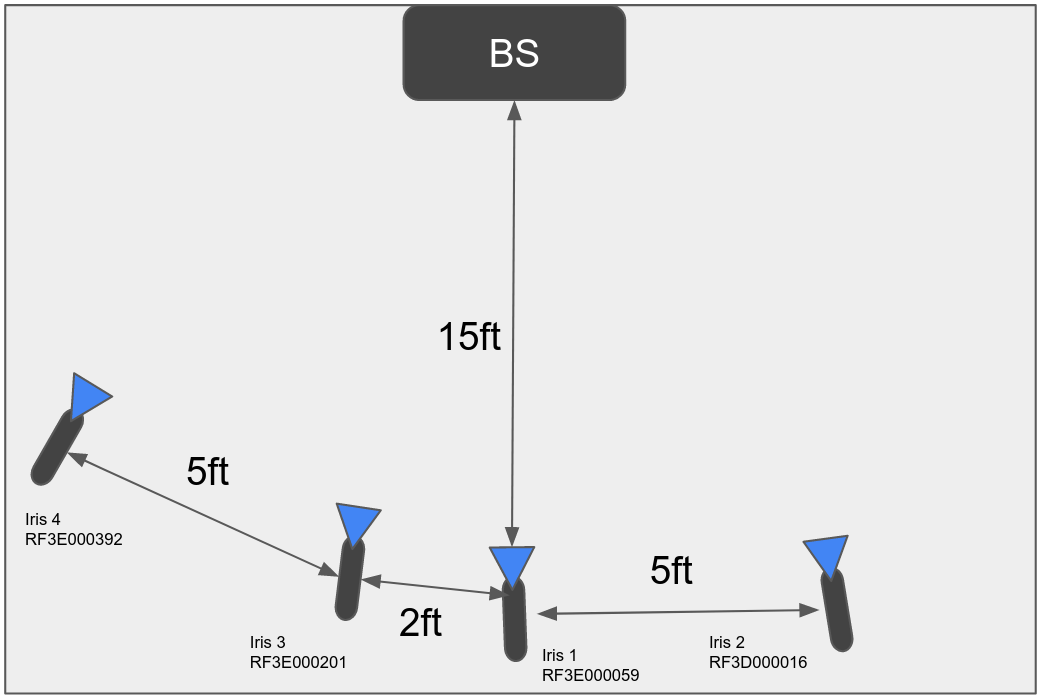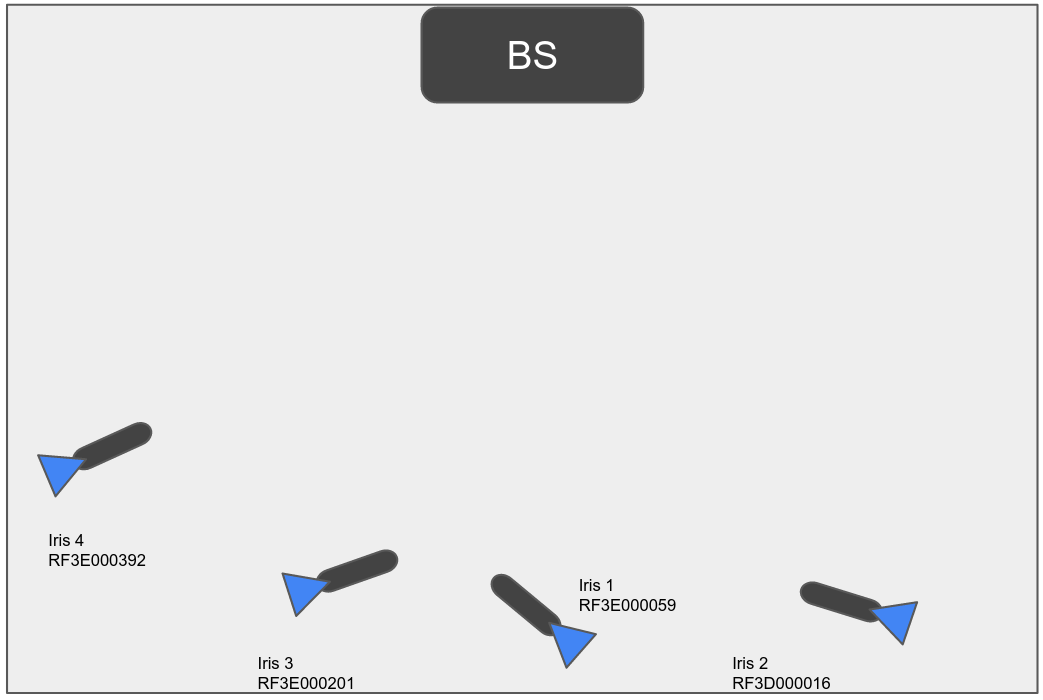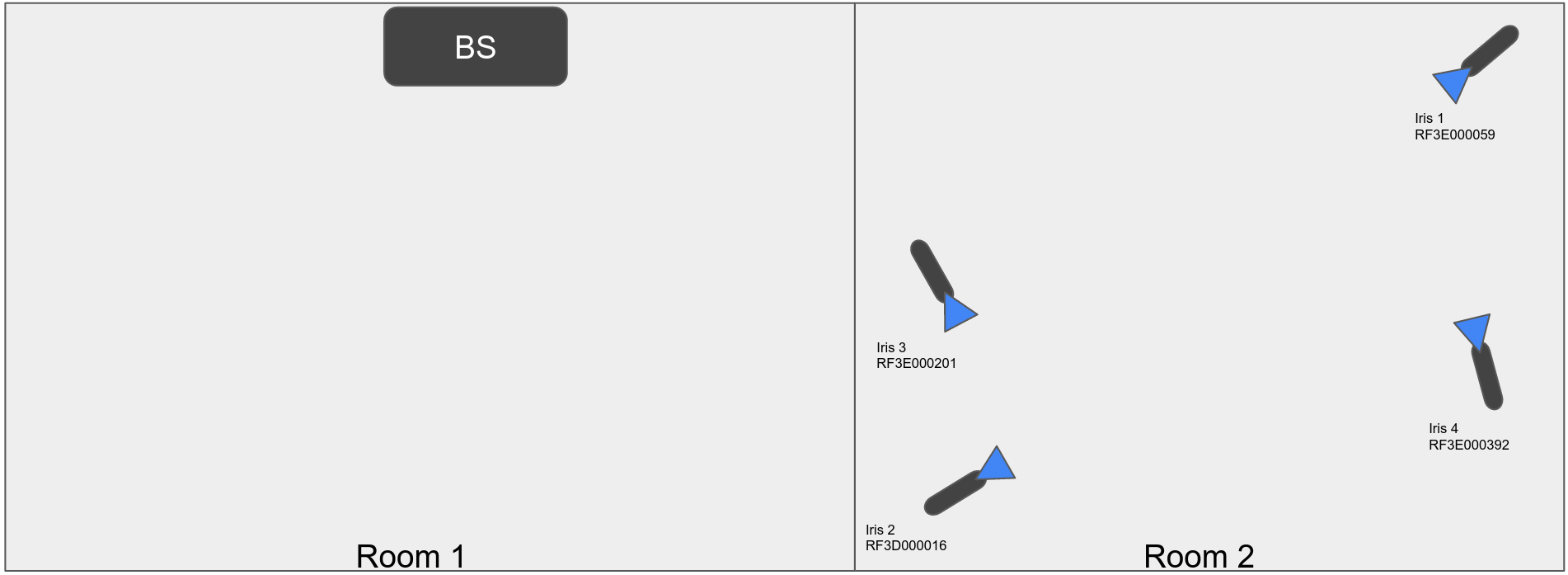Coherent vs. Non-Coherent MU-MIMO with Uplink Data

Project Dataset
For the first time, we release datasets to experiment with distributed beamforming in the presence of time and frequency offset. We have used the RENEW platform to generate extensive datasets containing uplink pilots and actual data OFDM symbols generated from random bits. We use a 64-antenna RENEW massive MIMO base station in an indoor lab environment, and up to 8 user clients, statically located in the vicinity of the base station. For more details, see the datasets description below.
Datasets Description
For the first time, we release datasets to experiment with distributed beamforming in the presence of time and frequency offset. We have used the RENEW platform to generate extensive datasets containing uplink pilot and actual data OFDM symbols generated from random data bits. We use QPSK modulation for all datasets and 16-QAM for part of the datasets. We use a 64-antenna RENEW massive MIMO base station in an indoor lab environment, and up to 8 user clients antennas (4 client radios with dual-polarized (DP) antennas), statically located in the vicinity of the base station. We collect datasets in two channel conditions, LoS placement of users and Non-line-of-sight (NLoS).
In each dataset, clients transmit time-orthogonal pilots to the base station and then transmit uplink data symbols simultaneously. We collect two type of datasets: coherent, and non-coherent. In the coherent case, base station antennas are time and frequency-synchronized as is the case for any massive MIMO base station. These datasets are useful to experiment with a variety of research such as expeprimenting with different MIMO detectors. In the non-coherent mode, however, we program each Iris radio in the base station to use its own LO. In this mode, there will be a CFO between the antennas. We call the array in this mode to be non-coherent. Thus, we emulate a distributed antenna array where synchronization among antennas typically happens over-the-air. Note that, Each Iris radio in the base station is equipped with its own LO, a super-TCXO with a nominal 100ppb accuracy. Through firmware settings, the Iris can be toggled to use its own LO to generate the RF clock or use the external clock from the central hub. We use each Iris's a local LO in the non-coherent case. This way we emulate a residual frequency and time offset among beamforming antennas (which could be present in an actualy distributed array).
We have collected datasets for 64x1, 64x2, 64x4, and 64x8 configurations. For 64x1 configuration, 8 seprate datasets are collected for each client antenna. Similarly, for 64x2, we have collected 8 datasets where in four datasets, data is from the 2 DP antennas of the same radio and in the other four, single antenna of 2 separate users (1/4, and 2/3 in the left figure below) are collected. In 64x4, 4 datasets are collected. Two of them are use antenna A and B of all 4 raiods respectively. The other two use both antennas of radios (1, 4) and radios (2, 3). In 64x8, all antennas of all radios are used. In all scenarios, we have collected data based on QPSK modulation. Some datasets with 16-QAM modulation are available as well. All the experiments are run in 3.6GHz.
For more detail see our paper here.
This dataset was collected by Rahman Doost-Mohammady and Mehdi Zafari at the Rice University campus. For details of the experiment, please refer to Section III-A in this paper. For any questions about this dataset, please contact the paper author or the RENEW team.
For details on how to use the datasets, see this RENEW Wiki page under "Post-Processing HDF5 Datasets". Before you use the datasets, please read the Data Copyright and License Agreement below.
Data Copyright and License
Rice University hereby grants you a non-exclusive, non-transferable license to use the data for commercial, educational, and/or research purposes only. You agree to not redistribute the data without written permission from Rice University.
You agree to acknowledge the source of the data in any publication or product reporting on your use of it.
We provide no warranty whatsoever on any aspect of the data, including but not limited to its correctness, completeness, and fitness. Use at your own risk.
You agree to acknowledge the following publication:
- Rahman Doost-Mohammady, Mehdi Zafari, and Ashutosh Sabharwal, "Robustness of Distributed Multi-User Beamforming: An Experimental Evaluation," in IEEE Sensor Array and Multichannel Signal Processing Workshop (SAM 2022)
in any publication or product reporting on your use of the data. If the data is not part of the IEEE Sensor Array and Multichannel Signal Processing Workshop reference data, you also agree to acknowledge the additional source of the data, if applicable.
NOTE: Downloading, obtaining, and/or using the data in any means constitutes your agreement with these terms.
BibTeX entry:
@ARTICLE{9827783,
author={Doost-Mohammady, Rahman and Zafari, Mehdi and Sabharwal, Ashutosh},
booktitle={2022 IEEE 12th Sensor Array and Multichannel Signal Processing Workshop (SAM)},
title={Robustness of Distributed Multi-User Beamforming: An Experimental Evaluation},
year={2022},
volume={},
number={},
pages={146-150},
doi={10.1109/SAM53842.2022.9827783}}
Dataset
| # | File Name | Link | Size |
|---|---|---|---|
| 1 | All MU-MIMO Datasets | Datasets including multi-user uplink pilot and data with frequency synchronized and non-synchronized mMIMO BS antennas | 175 GB |


